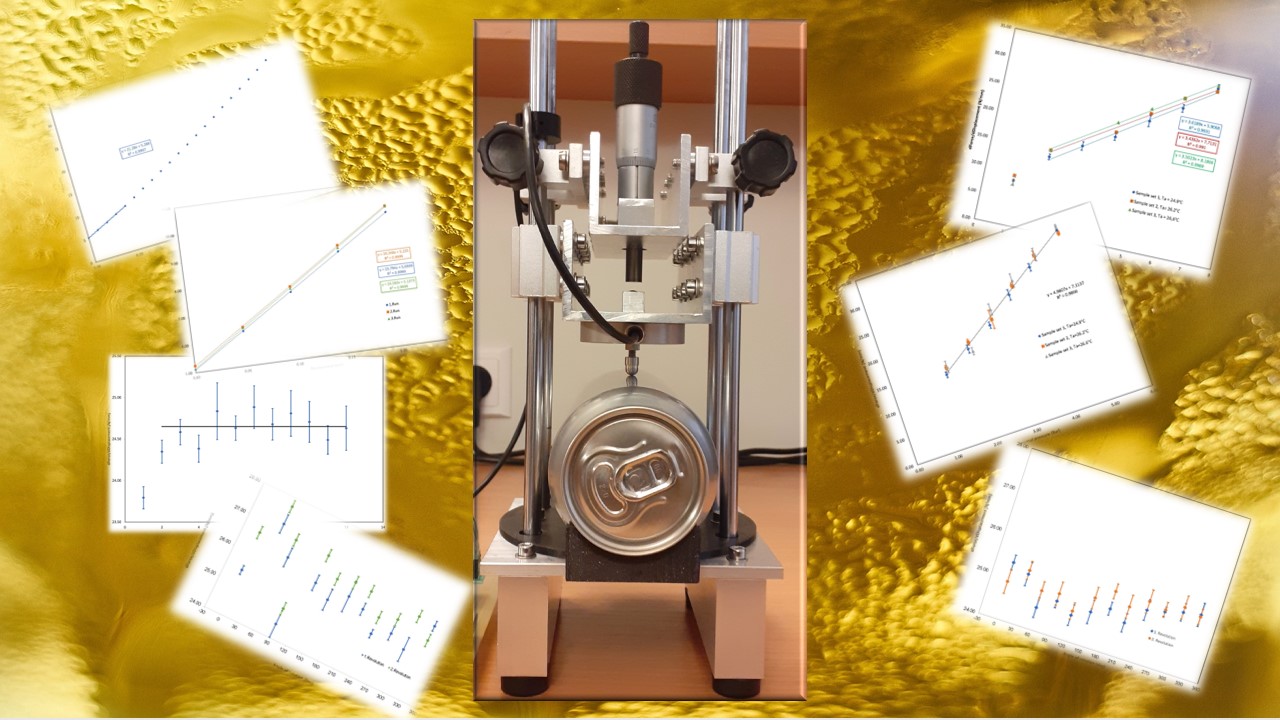Device for determination of internal pressure in beer cans by measuring the force-displacement curves
DOI:
https://doi.org/10.18832/kp2023.69.839Keywords:
beer, can, microbial contamination, force-displacement curve, measurement deviceAbstract
Microbiological contamination of beer is usually manifested by the production of CO2 and, hence, an increase in its concentration. The increased concentration of CO2 in a closed package leads to an increase of internal pressure, which can cause a destruction of the package and have dangerous consequences. A device for non-destructive monitoring of the internal pressure in beer cans based on measurement of force-displacement curve has been developed and characterized in this study.
References
Gabriel, P., Král, R., and Benes, R. (2023). Detection of the internal pressure in beer cans by measuring the force-displacement curves. Kvasny Prumysl, 69(4), 771–776. https://doi.org/10.18832/kp2023.69.771
Henry, W. (1803). III. Experiments on the quantity of gases absorbed by water, at different temperatures, and under different pressures. Philosophical Transactions of the Royal Society of London, 93, 29–274. https://doi.org/10.1098/rstl.1803.0004
Kegland. (2023). Pro Canning Gear—Canning Machines—Oktober Canner—Bulk buy Empty Aluminium Beer Cans, Crowlers. Retrived from: www.kegland.com.au
Kosin, P., Branyik, T., Savel, J., Ulmann, F., and Vlcek, J. (2018). Use of sorbents to increase beer foam stability. Journal of the American Society of Brewing Chemists, 76(1), 58–61. https://doi.org/10.1080/03610470.2017.1398565
Matoulkova, D., and Kubizniakova, P. (2014). Microbiology of brewing—Strictly anaerobic bacteria Megasphaera, Pectinatus, Zymophilus and Selenomonas and methods for their detection. Kvasny Prumysl, 60(11–12), 285–294. https://doi.org/10.18832/kp2014028
MEBAK. (2023). Kohlendioxid im Gebinde oder At-Iine mit CarboQC der Firma Anton Paar. Method 2.26.1.5. Mitteleuropäische Brautechnische Analysenkommission (MEBAK®). https://www.mebak.org
Meier-Dörnberg, T., Jacob, F., Michel, M., and Hutzler, M. (2017). Incidence of Saccharomyces cerevisiae var. Diastaticus in the beverage industry: Cases of contamination, 2008–2017. MBAA Technical Quarterly, 54(4), 149–156. http://dx.doi.org/10.1094/TQ-54-4-1130-01
NIST. (2023). NIST WebBook Chemie—NIST Standard Reference Database Number 69. NIST WebBook Chemie, SRD 69. https://webbook.nist.gov/chemistry/
Speers, R. A., and MacIntosh, A. J. (2013). Carbon Dioxide Solubility in Beer. Journal of the American Society of Brewing Chemists, 71(4), 242–247. https://doi.org/10.1094/ASBCJ-2013-1008-01
Štulíková, K., Vrzal, T., Kubizniaková, P., Enge, J., Matoulková, D., and Brányik, T. (2021). Spoilage of bottled lager beer contaminated with Saccharomyces cerevisiae var. Diastaticus. Journal of the Institute of Brewing, 127(3), 256–261. https://doi.org/10.1002/jib.653

Downloads
Published
How to Cite
Issue
Section
License
Copyright (c) 2023 Petr Gabriel, Roman Beneš

This work is licensed under a Creative Commons Attribution 4.0 International License.







